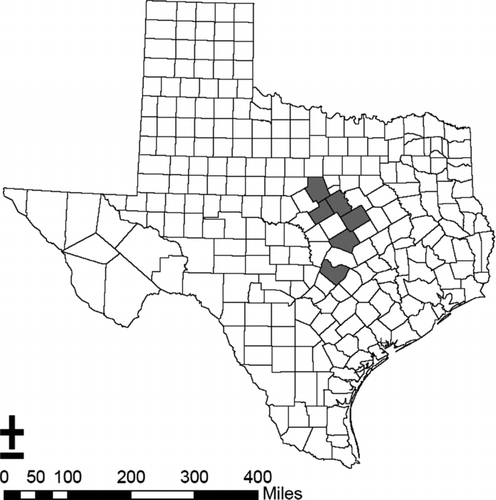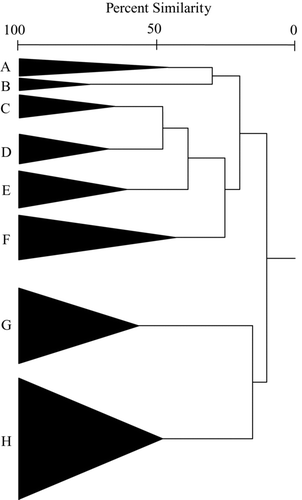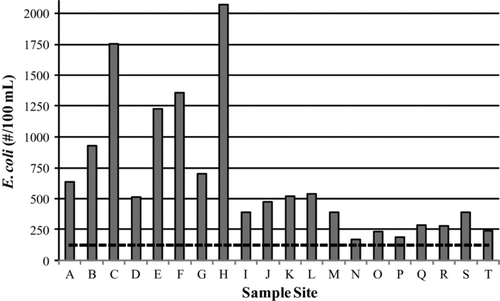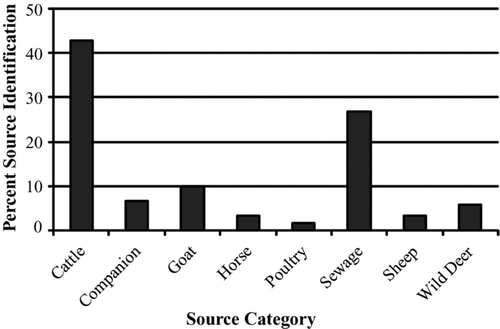Figures & data
Figure 1 Fecal and sewage sampling locations. Counties where fecal and sewage samples were collected are in gray.

Table 1 Number of samples collected and number of isolates analyzed from each sample type.
Figure 3 Unweighted Pair Group Method with Arithmetic Mean (UPGMA) dendrogram of E. coli isolated from various source categories based on carbon substrate utilization patterns (Bionumerics). Because of the large sample size (n = 2825), a condensed dendrogram using a 45% cut-off value is presented to show the 8 major groups.



